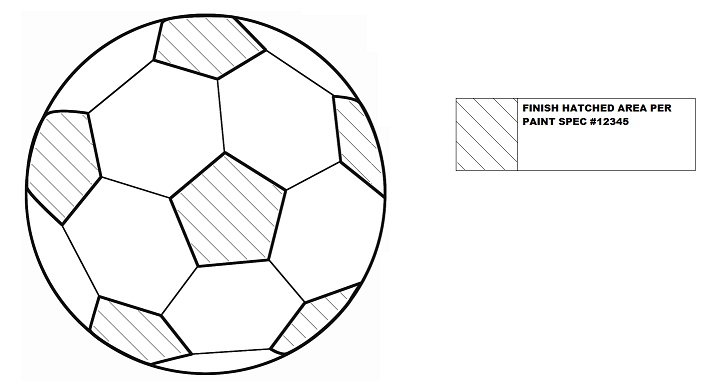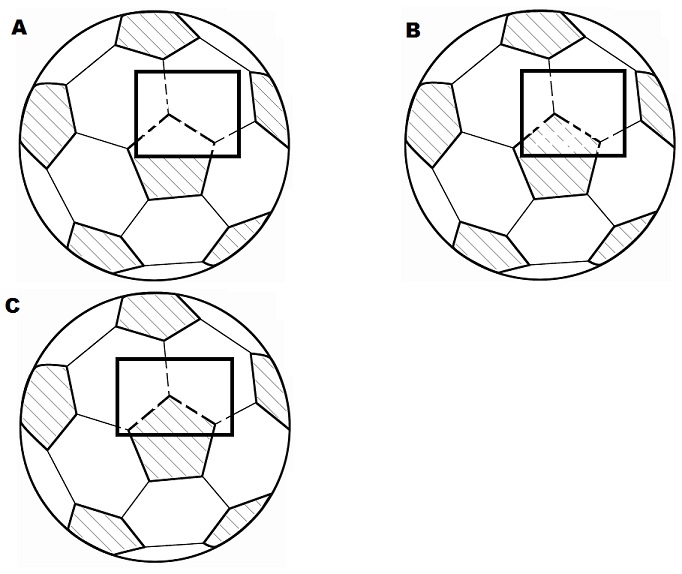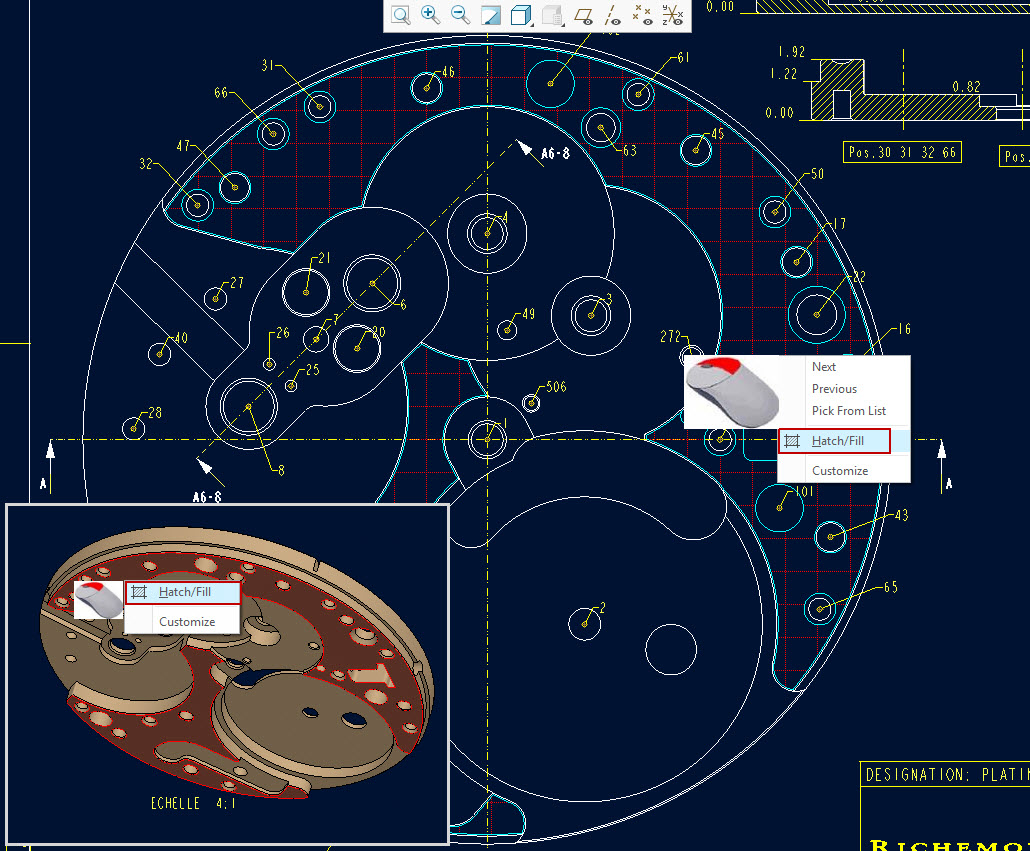Community Tip - You can subscribe to a forum, label or individual post and receive email notifications when someone posts a new topic or reply. Learn more! X
- Community
- Creo+ and Creo Parametric
- 3D Part & Assembly Design
- Re: In Drawing - Hatch Selected Surfaces
- Subscribe to RSS Feed
- Mark Topic as New
- Mark Topic as Read
- Float this Topic for Current User
- Bookmark
- Subscribe
- Mute
- Printer Friendly Page
In Drawing - Hatch Selected Surfaces
- Mark as New
- Bookmark
- Subscribe
- Mute
- Subscribe to RSS Feed
- Permalink
- Notify Moderator
In Drawing - Hatch Selected Surfaces
I want to designate portions of a part or assembly, by hatching, to be treated with a particular finish or inspection criteria.
Example: Imagine a drawing of a soccer ball, with the black patches hatched. A note on the drawing says HATCHED AREAS TO BE PAINTED WITH BLA BLA BLA...
It would be nice to designate surfaces in the model, or drawing to be hatched in the drawing. The hatching should be scaled and oriented within the drawing, but the selected geometry should be from the model.
The current method is to sketch a perimeter, piece by piece, until you have a closed entity which can be hatched. This is madness, especially when when working with complex styled surfaces. The perimeter does not update if the part changes, and it may consist of hundreds of entities. Another method is to create a hatched sketch in the part show the sketch in the drawing. This is a little more parametric, but the hatch spacing parameters have no relation to drawing units and still tedious.
If I could simply select surfaces and they would appear hatched, it would save our company thousands of hours per year.
- Labels:
-
General
- Mark as New
- Bookmark
- Subscribe
- Mute
- Subscribe to RSS Feed
- Permalink
- Notify Moderator
For those who don't know, you can hatch a surface, pick the surface and RMB>Hatch/Fill. However, this is only available for planar surfaces. Is this idea wanting to extend the concept to non-planar surfaces, and if so, what sort of algorithm are you requesting when the surface is curved, in particular, if the xhatching is done in projection, is it important that it follow the curves of the surface so that you could apply 'HLR for hatching' if desired?
- Mark as New
- Bookmark
- Subscribe
- Mute
- Subscribe to RSS Feed
- Permalink
- Notify Moderator
The lines should project to the drawing view, regardless of orientation. It the hatching appeared curve with the surface, it wouldn't match the table like the image below. We want to communicate to the manufacturer a particular treatment in those areas. If multiple treatments are needed, we will use several different hatch patterns. If the lines curve with the part they may be confusing to the manufacturer. HLR is important for drawing clarity.

- Mark as New
- Bookmark
- Subscribe
- Mute
- Subscribe to RSS Feed
- Permalink
- Notify Moderator
Thanks for the followup! Projected (as if the contour of the surface were flat) is certainly more reasonable math as well. However, it does conflict with the HLR part. I'm not sure if I was clear, this is not referring to the HLR of the view geometry itself, but rather of the hatching -- is it important to be able to hatch the patches on the 'back side' of the model, having the view in Hidden Line,and see those hatches as grey? Or is it important to have the hatched areas on the ball as shown above, but have the ball in an assembly where another part obscures half of it, and the HLR algorithm removes those patches? To be able to do that while having the hatching not in the model's space but in a projection is ... not sure if it would be possible. Certainly tricky.
- Mark as New
- Bookmark
- Subscribe
- Mute
- Subscribe to RSS Feed
- Permalink
- Notify Moderator
Thanks. Yes I was a little confused over the HLR.
In these views, the rectangle is an object in the foreground.
View A hides the hatching. This is probably the best and is how we do it now, manually. This is probably a similar algorithm to hiding patches on the back side.
View B shows the hatches as hidden lines. This is not needed, and probably difficult to do.
View C shows patch through foreground object. This is not preferred and may also cause issues with the patches on the back side showing through.
I have very little programming knowledge, but it seems A would be simpler. The hatching would be calculated after the HLR is done, and added to the exposed perimeters
.
- Mark as New
- Bookmark
- Subscribe
- Mute
- Subscribe to RSS Feed
- Permalink
- Notify Moderator
With Creo4 new *.pat Hatches are possible. This is great for drawings and very useful functionnality.
But it should be greater if it was possible in 3D models.
& of course, even better with all surfaces, not only planar surfaces....
Thanks
Fabrice

- Mark as New
- Bookmark
- Subscribe
- Mute
- Subscribe to RSS Feed
- Permalink
- Notify Moderator
Perhaps it should be possible for Michael to change the title of this idea: suppress In Drawing....
Thanks
- Mark as New
- Bookmark
- Subscribe
- Mute
- Subscribe to RSS Feed
- Permalink
- Notify Moderator
agree with comment here before: add this functionality in the model (part AND assembly), so that the location of the surface treatment can we shown in the model (for instance a partial paint location on a part of of a surface of an extrude feature).





